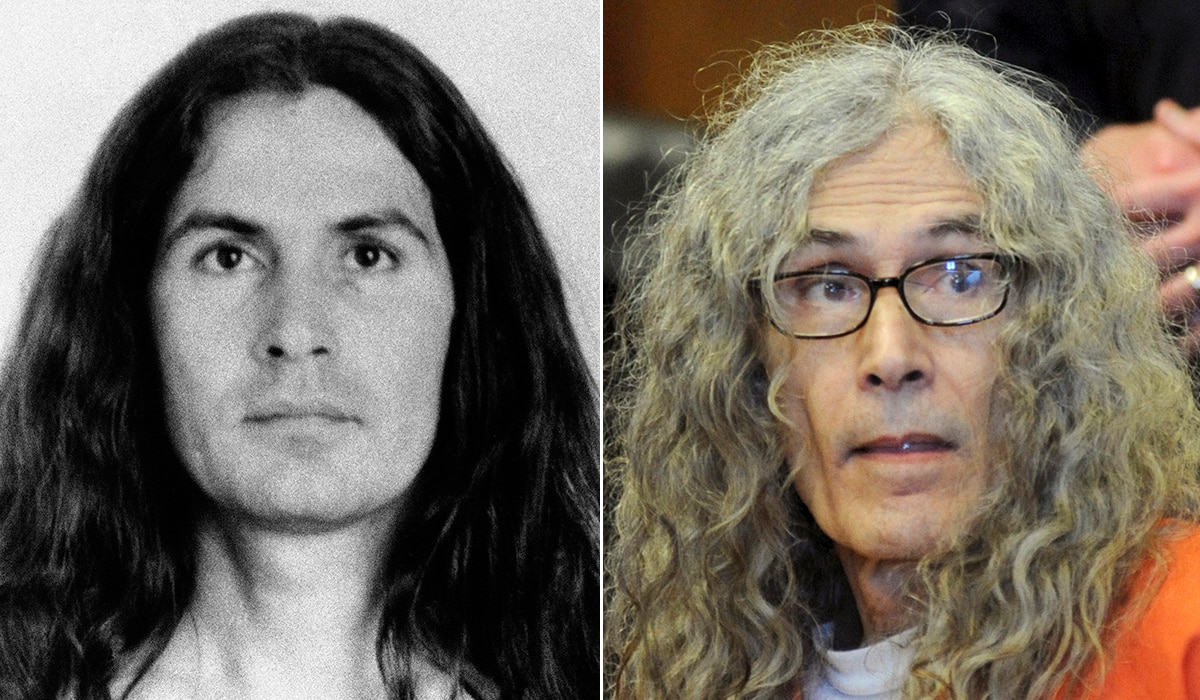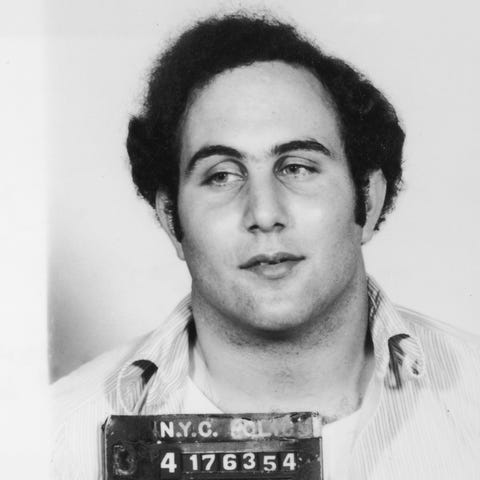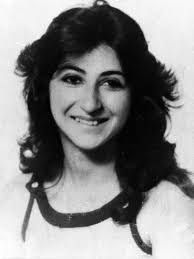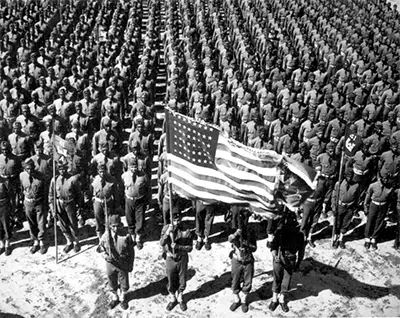This is my final blog!! It is crazy to think I’ve been writing in this all year. This class has been so interesting and might I add, had the best professor to teach this material. Meg made class incredibly fun and an overall comfortable class environment! I shall miss all of my classmates, most of which I had the privilege to work with the entire year (RCL 1 and 2).
Author: ser5582
The Dating Game Killer
Like so many other monsters throughout history, Rodney Alcala used charisma and his charming good looks to draw women in so he could rape and murder them. His exact death toll is unknown but some belief it to be more than 100 victims.

Born August 23, 1943, in San Antonio, Texas; Rodney Alcala was initially born Rodrigo Jaques Alcala-Buquor. At eight years old he and his family moved to Mexico where his father abandoned them, the family later moved back to the States and lived in Los Angeles, California.
Alcala joined the army at the age of 17 but was later discharged due to being diagnosed with an antisocial personality disorder. After leaving the military he went from California State University to UCLA where he received a fine arts degree. A skill he would use when luring women with the promise of taking their photo for contests. Alcala created the alias of John Berger when he fled to New York University.
Alcala, or “John Berger” was recognized off of the FBI’s Most Wanted List in 1971 by one of the children at the camp he worked at as a counselor. He was arrested for attacking Tali Shapiro, an eight-year-old back in California. He was charged with child molestation and served thirty-four months in prison, following his release he was placed on the sex offender registry.
A popular show known as The Dating Game had Alcala on as “Bachelor No. 1” in September of 1978. He presented himself as “a successful photographer, who got his start when his father found him in the darkroom at the age of 13, fully developed.” Although winning a date, she refused to take the interaction further due to her perception of Alcala being that he was “acting really creepy.”

Rodney Alcala’s Victims Include:
1970s: Cornelia Crilley and Ellen Hover, who were both twenty-three years old. He raped and murdered both women. Strangling Cornelia Crilley with her own stocking.
July 1979: Robin Samsoe, who was twelve years old, was abducted and murdered in Huntington Beach, California. Alcala’s 1980 conviction of this charge was overturned in 1984 because of the jury being informed of Alcala’s criminal record. He was convicted for Samsoe’s murder again in 1986 which led to another technicality lead to yet another overturned verdict. He was tried a third time in 2010 where jewelry belonging to Samsoe was found in his possession, the jury did not buy his claims that the earrings found belonged to him.
November 1977: Jill Barcomb, who was eighteen years old was assaulted and strangled.
June 1978: Charlotte Lamb was killed at the age of thirty-two.
December 1978: Georgia Wixted was raped, beaten, and strangled at the age of twenty-seven.
June 1979: Twenty-one-year-old Jill Parenteau was killed.
Alcala was tried and found guilty in 2010 for the murders of Samsoe, Barcomb, Lamb, Wixted, and Parenteau; he was later sentenced to death.
Although not proven, some authorities think Rodney Alcala killed 50 to 130 people.

Sources:
https://www.biography.com/crime-figure/rodney-alcala
https://www.britannica.com/list/7-of-historys-most-notorious-serial-killers
Bundy
Born a shame to his religious family on November 24, 1946, in Burlington, Vermont, Ted Bundy would later become an incredibly well-known necrophiliac and rapist who killed 36 women in the 1970s. Bundy never knew who his father was. It could’ve been Penn State graduate and Air Force Veteran, Lloyd Marshall; or a man named Jack Worthington; or even Ted’s grandfather. His father’s name on his birth certificate was written as “unknown”. Being an illegitimate child, Bundy was raised as an adopted son to his grandparents who told him that his mother was his sister. But in 1951 Bundy’s mother Louise married Johnnie Bundy, who Ted did not respect. He claimed that his stepfather was “too uneducated and working-class”. He grew up an odd child; interested in knives at the age of three and stealing and peeking into windows when he was a young teenager.
Bundy graduated with a psychology degree in 1972 from the University of Washington where he fell in love and later had his heartbroken by the woman who many of his future victims would resemble.
Beginning in 1974, Bundy would lure women to his car by faking an injury and seeking their help carrying his books, then he would knock them unconscious and put them into the backseat of his yellow Volkswagen Beetle.
He was arrested in 1975 for kidnapping Carol DaRonch who luckily escaped, but he escaped prison. He escaped from prison twice more. In 1977 he was sentenced for the murder of a woman in Colorado, but he jumped out of the courthouse library. Then again in December when he climbed out of a hole in the ceiling of his cell.
Bundy was finally convicted in July of 1979 for the murders of two members of Chi Omega at Florida State University, the nail in his conviction being the bite marks he left on the girls’ legs. He was given the death penalty and was executed in the electric chair in 1989.
Ted Bundy murdered 36 women, but police think there were at least 100 deaths.

Source:
https://www.biography.com/crime-figure/ted-bundy
Son of Sam
The 1970s was a horrifying period in New York City, with crime skyrocketing and fear riddling the streets. But one man’s presence in the city was feared more than any other. From 1976 to 1977, David Berkowitz killed 6 people and severely injured 7 others. Writing letters to NYPD, taunting them and giving himself the name of “Son of Sam”.


Born June 1, 1953, with the name of Richard David Falco in Brooklyn, New York. Berkowitz was adopted when he was just a few days old. All his life growing up he was a very troubled boy, always fighting in school and causing trouble. And experiencing severe depressive episodes that would cause him to remain silent for days at a time cooped up in his bedroom talking to himself, along with strong suicidal urges that had him sitting on the edge of his 6th story apartment window and the desire to leap in front of moving cars and trains.
Despite all of the struggles during his youth, Berkowitz’s mother remained his rock; so when she died of cancer when he was only 14 years old he unraveled even more.
After barely graduating High School with the help of his father, Berkowitz joined the Army where the structure helped some of the dark emotions that all but consumed his every thought. But he still struggled and after finishing his 3-year enlistment he returned home to New York City.

But when he returned the isolation only continued, for his friends had either gotten married or moved away.
But one night at a party he met a few men who were part of the occult. Which had always fascinated him growing up, so he became heavily involved in it. He started believing in the Satanic Church, and it would be after being caught by the police where he would blame demons for telling him to kill all of those people.
The first of his murdering spree was the night of July 29, 1976, in the Bronx. Two teenage girls, Jody Valenti (right photo) and Donna Lauria (left photo) were sitting in a car in front of Donna’s house when Berkowitz walked up to them and shot them with his .44 Caliber. Donna was killed and Jody was badly injured.

Berkowitz waited only a few months before attacking again. He shot at a couple in a parked car, badly injuring them both.
Then again attacking two teenage girls walking together, leaving one of them paraplegic.
January of 1977, Christine Freund (below) and her fiance were shot in their parked car. Christine was killed.

Virginia Voskerichian (below), a college student, was shot and killed on her way home from a class by Berkowitz that March.

Valentina Suriani and her boyfriend Alexander Esau (both pictured below) were both killed that April. It was at this crime scene where Berkowitz left a letter to the NYPD Captain Joseph Borrelli, where he signed himself as “Son of Sam”. That letter was only the first of several that would be left by his victims’ bodies.

July 31, 1977, marks his last kill. Stacy Moskowitz (left) and Bobby Violante (right) were shot, Stacy was killed and Bobby was blinded in one eye and suffered the loss of most vision in the other.

Authorities were finally able to arrest Berkowitz on August 10, 1977, due to a witness of Stacy and Bobby’s attack who noticed a parking ticket on the car the shooter got into. Police looked at the parking ticket records and found Berkowitz. Through questioning and for the duration of his trial, Berkowitz claimed that his neighbor, Sam Carr, sent messages through Carr’s dog to instruct Berkowitz to kill. The defense was ruled out and Berkowitz was deemed competent to stand trial, he was sentenced to six consecutive life sentences for each murder, resulting in a 365-year sentence.
Berkowitz has been in prison for 40 years now and in the late 80s, he has claimed to have found God. He became incredibly religious and has started his own ministry from prison where he receives letters requesting his ministerial assistance. His supporters run a website in his honor that tells his story and provides video of interviews where he preaches his newfound values.
Sources:
https://www.biography.com/crime-figure/david-berkowitz
Berkowitz’s Website: https://www.ariseandshine.org/testimony-translations.html
https://murderpedia.org/male.B/b/berkowitz-victims.htm
“The Great War” Round II
It is 1939 at the beginning of yet another world war. The allies and axis powers were at war, and the United States was yet again in a state of isolation.
The United States remained neutral at the beginning of the war after declaring that it wasn’t their fight to get involved in. Despite this statement, the U.S. still threw its support towards Great Britain. Sending them military supplies and any resources they could spare, especially after France was invaded by the Nazis and a large amount of French and British soldiers were killed.

But what broke the United States out of its isolated shell was Germany attacking their supply ships that were on their way to Great Britain, and Pearl Harbor, an attack by the Japanese in Hawaii that left 2,403 killed and 1,000 injured. After these events, the U.S. joined the war and the allied forces won the war by 1945.

Following the war, the United States altered its foreign policy approach from isolationism to containment. With the goal to stop the spread of communism to countries not already under its influence. This method of containment led to the United States getting involved in the Korean War in 1950 and the Vietnam War in 1955.
The Cold War raged on from the end of World War Two until the collapse of the Soviet Union in 1991. The cause being the communist Soviet Union pushing its communist influences onto the countries it liberated from German control. The United States and its allies created NATO to resist the Soviets’ presence. The decades-long war finally ended with the fall of the Iron Curtain and the Soviet Union, which led to the establishment of a democratic Russia.
:max_bytes(150000):strip_icc()/GettyImages-184282094-59b2b8dfd088c000119d6ec5.jpg)
Following the Cold War, the United States has developed four key goals of foreign policy.
- “Protect the United States and American”
- “Advance democracy, human rights, and other global interests”
- “Promote international understanding of American values and policies”
- “Support U.S. Diplomats, government officials, and all other personnel at home and abroad who make these goals a reality”

Sources:
https://davinciworldwartwo.weebly.com/us-foreign-policies-during-wwii.html
https://www.ushistory.org/gov/11a.asp
https://www.britannica.com/event/Cold-War
https://2009-2017.state.gov/r/pa/ei/rls/dos/107330.htm
Dahmer
Born on May 21, 1960 in Milwaukee, Wisconsin; Jeffery Dahmer was known “as an energetic and happy child”. But following a double hernia surgery at the age of 4, this happy boy became increasingly isolated. When he was fourteen years old Dahmer’s parents got divorced, this upheaval was believed to be a major cause in his rising interests in murder and necrophilia.

Dahmer was a full blown alcoholic at an early age which led to his dropping out of Ohio State University after only one quarter of a term. His father convinced him to join the military, so he joined the Army in 1978 and was shipped off to Germany. He was discharged soon after because of his drinking problem increased and began spinning out of control, and it was not until later that German authorities discovered th bodies he left behind.
Before his severe actions of murder were discovered, Dahmer was arrested several times before. He was arrested for indecent exposure in 1986 for masturbating in front of two boys, and this was after his father sent him to live with him grandmother in Wisconsin after getting arrested in Ohio for disorderly conduct. Then in September of 1989 he was charged with the sexual exploitation and second-degree assault of a thirteen year-old boy. During his 1989 trial, Dahmer “was the model of contrition, arguing eloquently, in his own defense, about how he had seen the error of his ways, and that his arrest marked a turning point in his life.” It was argued that he needed treatment rather than to be locked up, the judge agreed and gave Dahmer “day release” (he was allowed to go to work during the day and had to return to prison at night).
Jeffery Dahmer committed his first murder about a month after graduating high school in 1978. He picked up hitchhiker, Steven Hicks, and drove the two of them to his parent’s house. When they got there Dahmer got Hicks drunk and struck him in the head and strangled him with a barbell when he tried to get up and leave. He then dismembered Hicks’ body and packed them into plastic bags, burying them in the backyard.
His second victim was killed September of 1987. Dahmer and a man by the name of Steven Tuomi checked into a hotel room and they both got drunk. The following morning Dahmer woke up to see Tuomi dead but had no memory of the night. He brought Tuomi’s body back to his grandmother’s house, and before getting rid of the remains Dahmer dismembered and masturbated on the body.
He killed two more men in his grandmother’s
After an early release from his one year prison sentence, his number of victims jumped from four to seventeen. As he killed more men, he started experimenting with chemicals when disposing of the bodies and even eating the carcuses of his victims. Even performing lobotomies on his living victims and injecting them with muriatic acid.
He was almost caught in May of 1991 when a neighbor of his called the police because there was a naked boy running in the street, he had just escaped Dahmer. But when the police showed up they believed Dahmer when he claimed the boy to be his nineteen year-old lover, and they believed him because the boy who was actually only fourteen years-old was Asian and was the brother of the young boy Dahmer was charged with sexually abusing three years prior. After the police escorted them back to Dahmer’s home and left, he killed the young boy, he was Dahmer’s twelfth victim.
Dahmer was finally arrested July 22, 1991. Police found body parts and poloroid photos of victims when they searched his home after finding Tracy Edwards walking down the street with handcuffs in his wrists.
His trial held racial tensions because a majority of his victims were African American, resulting in strict security precautions. He was found guilty and sentenced to sixteen consecutive life terms. But was murdered by a fellow innmate on November 28, 1994.

Sources:
https://www.biography.com/crime-figure/jeffrey-dahmer
https://www.britannica.com/list/7-of-historys-most-notorious-serial-killers
“The Great War”
Hello! Welcome to another blog of American foreign policy through the ages!! Super exciting right? In this post, you shall read about America’s relations with other nations during and after the GREAT war, also known as the first of two world wars.
As you know, the United States remained in isolation for the majority of its early history. Opening up to foreign policy more during the presidency of Teddy Roosevelt and the Panama canal. But the United States faded back into its prior stance on isolationism when World War I came around. President Woodrow Wilson urged the nation not to become “emotionally or ideologically involved in the conflict”, and the rest of the country was perfectly fine with that. So for the first chunk of the war, America remained neutral.
American neutrality actually is a large reason as to why Wilson got reelected in 1916, with the popular slogan “he kept us out of war”.

But this slogan soon became false in April of 1917 when Wilson asked Congress to give the ‘okay’ to enter the war in order to make sure the world was “safe for democracy”. War was officially declared by the United States Congress on April 6, 1917. Even after entering the war, America remained semi-neutral, not “officially” joining the allied powers yet still fighting WITH Great Britain and France against the Central Powers.
Similar to regretting getting that “super cute tattoo” of an infinity sign with your boo’s name on it (no hate to those who do have it! You look great girl!), the United States began to question if entering the war was a mistake (it was). American citizens faced the backlash of the emotional and economical costs of the war. The war FINALLY ended on November 11, 1918.
Following the end of the war, the League of Nations was formed in 1920. This international organization was created to be a safeguard “help ensure a global ‘permanent peace”

Sources:
https://online.norwich.edu/academic-programs/resources/isolationism-and-us-foreign-policy-after-world-war-i
First Photo: https://www.historyforkids.net/america-in-world-war-1.html
Second Photo: https://commons.wikimedia.org/wiki/File:Flag_of_the_League_of_Nations_(1939–1941).svg
Teddy’s Foreign Policy
Yes, more American history posts! Yayy!! Forgetting to mention this in the previous post, my civic issues posts will be a little bit different. I will still be following the topic of politics, and more specifically, foreign policy. But with a twist, while other posts may focus on the now, I am taking you through the United States’ history of foreign policy leading up to the policies in place in today’s government. Going back in time and researching policies and how foreign relations developed will hopefully shed some light on reasoning behind the global powerhouse that is the United States of America.
Up until this point in American history, the United States remained a neutral and globally quiet country. But because of this, European powerhouses such as France, Great Britain, and Germany saw the United States as weak and noninfluential in international issues.
Which is EXACTLY why the United States should have hit the ground running with international involvement. The founding fathers and decades worth of leaders should have done as much as they could to internally strengthen the country then move in on foreign relations to avoid being seen as weak.
But thankfully the global perception of the Red, White, and Blue of the United States drastically changed when Theodore Roosevelt became president in 1901 and introduced his foreign policy philosophy of; “speak softly and carry a big stick”.
Which the United States demonstrated in the Spanish-American war that they were not afraid to do what needed to be done to both stand up for what they believe is right, in helping the rebels in Cuba; and that they will not hesitate to avenge any lost Americans, retaliating following the explosion of the battleship Maine.
Roosevelt’s foreign policy later became well known as, “Big Stick Diplomacy”. The “speak softly but carry a big stick” referred to the United States’ unspoken threat of military power that the American government had no issue using if they needed to.
His greatest use of this “Big Stick Diplomacy” being the Panama Canal. Up until this point the United States desperately wanted a way to essentially cut through the top of South America to avoid spending two months sailing to the bottom of the continent and back up again. 1901 granted them the opportunity to use Panama as that pathway; in return for the United States helping to fund a Panama revolution, and providing a Naval blockade that prevented Columbian troops from setting foot in Panama.
The Hay-Banau-Varilla Treaty was signed in 1903 and the building started! The United States gained control of the canal for $10 million and an annual price of $250,000. Which is absolutely incredible knowing how different that ten million and two-hundred and fifty thousand dollars would be today; $285,714,285.71 and $7,142,857.14.
Roosevelt became the first president to ever leave the country during his term when he traveled to Panama in 1906 to check the canal’s progress. Imagine what it would be like if American presidents never traveled abroad to visit other rulers/government officials.
Ten years, 30,000 workers working ten hours a day finally finished the canal in 1914.
Sources:
https://www.theusaonline.com/history/industrialization.htm
https://www.nationalgeographic.org/thisday/sep2/big-stick-diplomacy/
https://millercenter.org/president/roosevelt/foreign-affairs
Foreign Policy in the early United States
Benjamin Franklin once said; “A virgin state should preserve its virgin character and not go suitoring for alliances, but wait with decent dignity for the application of others.” Perfectly depicting the United States’ foreign policy, as in its early years as our nation’s leaders believed the United States to be too new and fragile to take on the drama of the rest of the world. This was a naive plan on the part of the founders and especially Washington when he said; “the great rule of conduct for us in regard to foreign nations is to have with them as little political [as distinct from commercial] connection as possible.” in his farewell address, also mentioning how Europe had their own interests that did not particularly match up with America’s. It was incredibly naive that the leaders of early America believed that they could stay out of the business of the rest of the world; think of it as your two best friends (Britain and France) arguing and constantly pressuring you to take a side and you just keep repeating, “I refuse to take a side!!”
On the other hand, this era of isolation gave America time to improve itself. The United States obtained the Mississippi River and the port of New Orleans, almost tripled in size with the Louisiana Purchase, and pushed westward to expand their reach in North America. This neutrality also forced Great Britain and France to acknowledge America as an independent nation, which was a good thing because it showed the rest of the world that the U.S. didn’t need the help of any other country to become successful and soon a global powerhouse.
I believe that the United States should have avoided keeping to itself for the first few decades because things could have gone very badly if a stronger country such as Spain took that as a weakness rather than strength and independence. But in the end, it was an incredibly smart move because it did show the rest of the world how strong the United States of America was on its own and what it could accomplish, simultaneously resulting in other nations wanting to become allies with the U.S.
Sources:
https://history.state.gov/departmenthistory/short-history/development
https://oxfordre.com/americanhistory/view/10.1093/acrefore/9780199329175.001.0001/acrefore-9780199329175-e-720
https://courses.lumenlearning.com/boundless-politicalscience/chapter/the-history-of-american-foreign-policy/
Dr. Death
Harold Shipman also referred to as “Dr. Death” was a serial killer from the 1990s. He killed 215-260 patients by injecting them with incredibly lethal doses of morphine.
Shipman was born in 1946 in Nottingham, England. He was the middle child and his mother’s favorite, which led to him having a sense of superiority at a very young age. in 1963 his mother died of lung cancer but before her decline, Harold stood by her side. He was intrigued by the effects morphine had on her pain. This led him to later attend medical school at Leeds University. He was always independent and more of a loner but he met and married his wife, Primrose, when he was 19. She was 17 and five months pregnant when they got married.
Harold began his medical career in Todmorden, Yorkshire; where he killed his first 71 patients, but his career officially hit a speed bump when he became addicted to pain killers (allegedly). This is where his forgery began, he wrote out several false prescriptions for copious amounts of drugs. When he was caught in 1975, he left the practice in Yorkshire and attended rehab, along with being served a fine and a conviction for forgery. Harold went on to work at Donneybrook Medical Center in Hyde. He slipped into a persona of a trustworthy family practitioner.
He worked there for two decades before an undertaker began taking a second look at the deaths of several of Shipman’s patients, as their poses of death were all very similar; “fully clothed, and usually sitting up or reclining on a settee.” When the undertaker confronted Shipman, he simply said that everything was alright. But soon after this encounter another colleague noticed the similarities and found them alarming, Dr. Susan Booth contacted the police soon after.
When approached by the authorities Shipman, “a caring, family doctor”, denied all the allegations presented against him. With no further evidence, the investigation against him was not going any further. That was until Angela Woodruff, the daughter of Kathleen Grundy who was an 81-year-old widow and one of Shipman’s victims, came into the picture. Kathleen Grundy died after a home visit by Dr. Harold Shipman. He told Angela that there was no investigation or autopsy that needed to be performed on her mother’s body, so Angela buried her mother. Angela handled her mother’s affairs because she was a lawyer, and in doing so she discovered that there was a second will that gave a majority of Kathleen’s property to Shipman. She knew that the will was obviously a fake and alerted the police. Kathleen’s body was dug up and examined where it was discovered that she had died due to an overdose of morphine. The police instantly began investigating other deceased patients of Shipman, but many of them had been cremated upon advice from Shipman to the families and telling them there wasn’t any reason to perform autopsies.
Further into the investigation, the police discovered that following the unusual death of a patient, Shipman would forge medical records and lie on the patient’s death certificate and insert a false cause of death. But what Shipman didn’t know was that the electronic records in the system time-stamped when they were edited, which showed the police which records were tampered with, narrowing down Shipman’s victim pool.
The police officially charged Shipman in 1998 with fifteen counts of murder and one count of forgery. His trial officially commenced in 1999. Several witnesses appeared to the court; stating how Kathleen’s fingerprints weren’t even on the second will, the gruesome details of the morphine’s effect on the victims’ bodies, and how Shipman altered patients’ records to change their symptoms to explain their deaths. Shipman appeared rude, arrogant, and constantly lied on the stand while in court; not helping him gain the sympathy of the jury.
Harold Shipman was officially convicted on January 31, 2000, on fifteen counts of murder and one count of forgery. He was sentenced to life for each account of murder and four years for the forgery.
Sources:
https://www.biography.com/crime-figure/harold-shipman
https://www.history.com/news/8-of-historys-most-notorious-serial-killers
